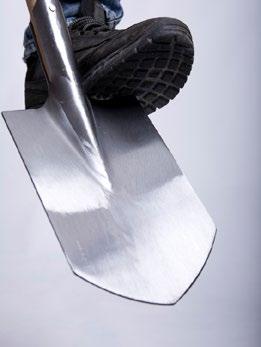
10 minute read
HOME & GARDEN
DIGGING DEEP
Gardening with Pulse
We’ve spent the past couple of issues advising how and when to start planning the year ahead for your garden and when to think about putting down the seeds that will provide good stuff throughout the year – including fruit and vegetables.
But this month, we are turning our attention to something else you can do to enhance your outside space, and it’s an easy way to help bees and butterflies find their way to you; by sowing wildflowers.
Wildflowers will transform a bland space into an attractive one that is bursting with colour and life.
As a youngster, I used to love feeling the sun on my back, taking in the views of the blooming wildflowers, and listening to the chirping of grasshoppers, but it’s something that future generations will never experience unless we act now.
In less than a century, 97% of our wild flower meadows have been lost.
Of course, our own back gardens don’t lend themselves to a luscious green meadow bursting with pops of wildflower colour, but we can still help to make a difference. If we all do a little, the combined efforts count for a lot.
We can start by ditching the fake stuff!
Insects can’t live in fake grass, birds can’t feed from it, and it uses plastic which can’t be recycled. At a time when our wildlife is struggling to adapt to loss of habitat because of our intensive farming and new builds, do we really need to add plastic grass into the mix of issues for them? Micro plastics will also find their way into our soil, and the contamination will last for centuries.
And, while you might think they look attractive, it won’t take too many years before the fake lawns look nasty. We’re not trying to vilify those of you who are looking outside at your own plastic installation, but if you do have a fake lawn, you will also know that while they remove the need for a mower, they still need to be washed and brushed...even hoovered!
It’s best to turf out the pretend turf and get back to nature. The birds and the butterflies will love you for it, and there’s a reason why we are told to get closer to nature – it’s good for mind, body and spirit.
Having established that there is no substitute for the real thing, the quickest way to increase colour and support to the garden is to stop mowing – allowing a patch to grow wild will increase biodiversity.
Wildflower seeds and seed bombs are commonplace in stores and online and are an easy way to help launch a wildflower patch or ‘mini-meadow’ – but don’t just expect to toss the seeds on the ground and enjoy instant success; instructions are there for a reason, so do heed them.
Lady’s Bedstraw, oxeye-daisy, common daisies, wild carrot, cowslip, cornflower, common knapweed, selfheal and white and red campion are among those delicate blooms which are aesthetically pleasing, and they will ‘bee’ brilliant for our pollinators.
Our actions today will benefit tomorrow’s generations, and that has got to be worth causing a buzz about!
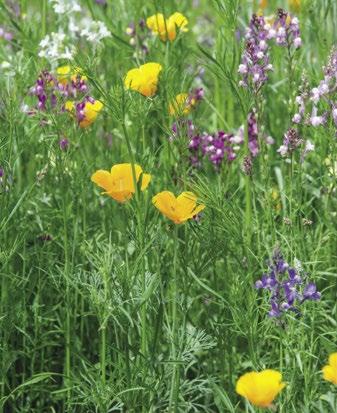
Top Tip...
With so much attention focused on our outside spaces, it can be easy to overlook what’s going on inside the home - but our houseplants need a little TLC too.
Too much water is more likely to kill your plant, as opposed to too little.
Plants don’t like warm water and they hate icy cold water just as much - when giving them a drink, make sure the water is at room temperature, and you might need to increase the frequency or amount you give at this time of the year, simply because many of our plants tend to grow more in the spring and summer.
In next month’s issue, we’ll be exploring how you can ensure your houseplants are healthy and happy.
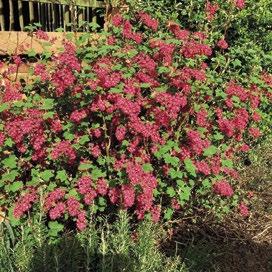
Wildflowers will help bring your garden to life
How does your garden grow?
What a beautiful time of year this is. Daffodils are in flower, as are a wide selection of alpines and heathers (see photo). Spring has sprung! There’s much to do in the garden. As flowers fade, don’t forget to deadhead. Preventing daffodils from setting seed allows the food from the leaves to be transported underground that will help to produce healthy existing and new bulbs.
Clipping heathers before they produce new leaf growth helps to produce compact plants. Whilst flowers are still visible it’s a good time to dig up anything you’re not keen on and also to remove the adjacent seedlings.
Flowering currants, Ribes sanguineum, will benefit from a hard prune to encourage next year’s flowers, as soon as this year’s flowers have faded.
It’s also time to sow hardy annuals, herbs and wild flower seeds outside. Select your site, weed and level the soil and tread lightly beforehand. Pot marigolds, Calendula officinalis, are an old favourite with single, preferred by bees, or double flowers in various shades of yellow and orange. They will withstand a light frost but do have some fleece at the ready.
Have you somewhere that you could spare to grow wild flowers?
They are a great benefit to butterflies and bees with various mixes available, and many flowering in their first year.
Gill Routhorn, Denton & District Gardening Club
> Denton & District Gardening Club (DDGC) DDGC is a small, friendly club which meets on a Monday evening every month. New members and visitors are always welcome.
For more information please contact m.pateman@yahoo.co.uk or 01604 890875.
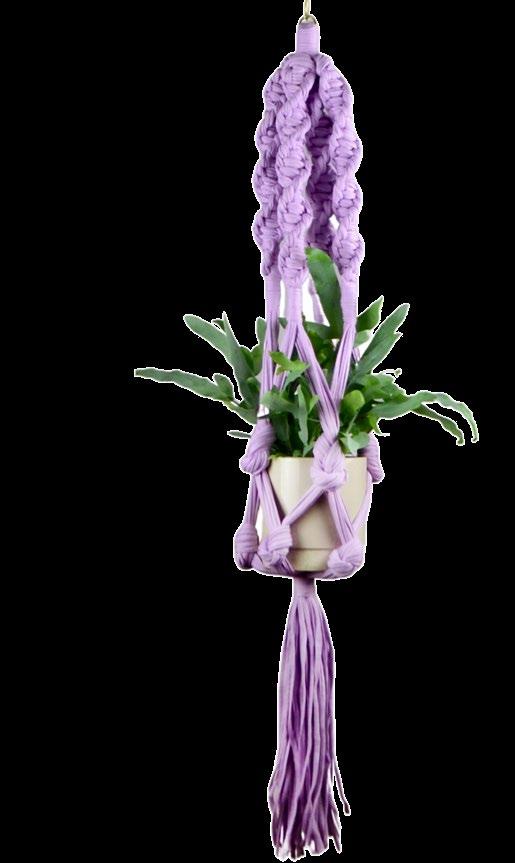
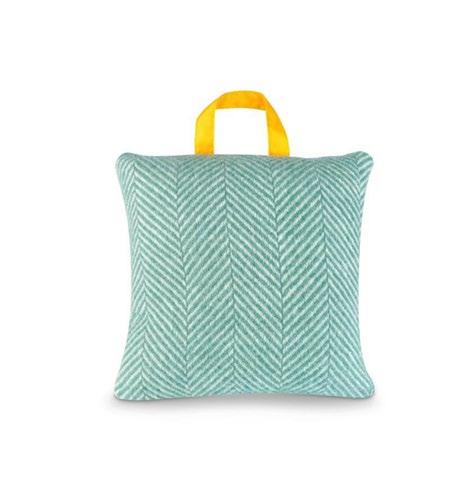
Parma Mint &Violet
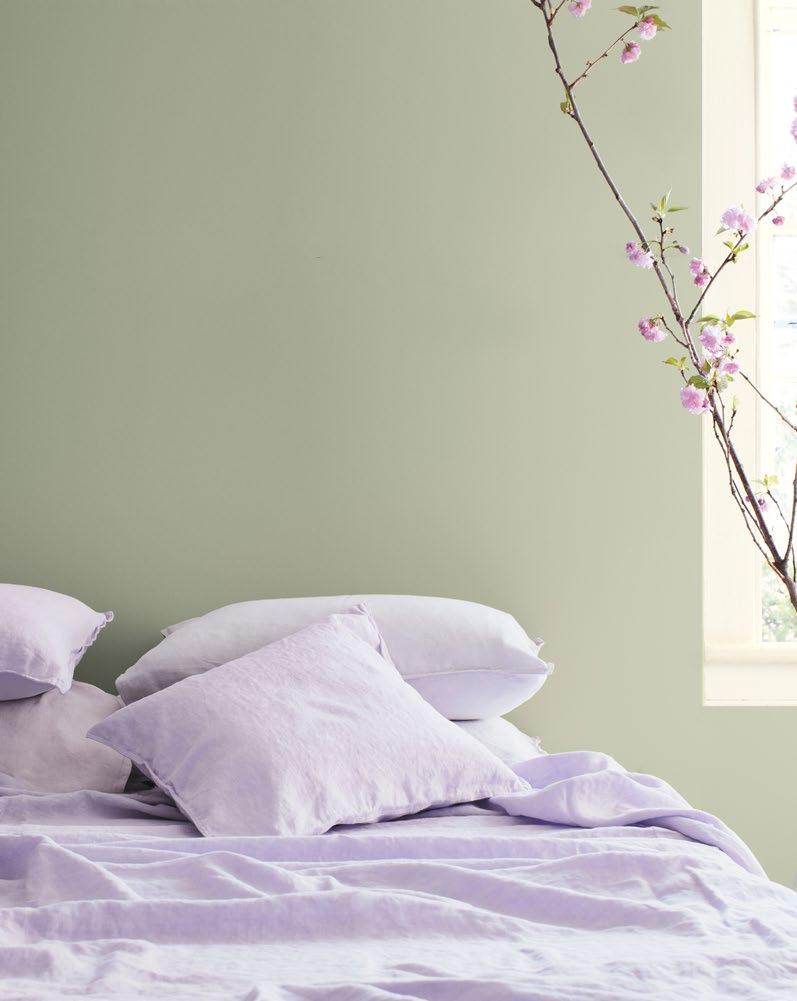
Parma violet and mint make the perfect calming combination and the marriage of these two hues guide us to a tranquil setting as we enter Spring/Summer 2022.
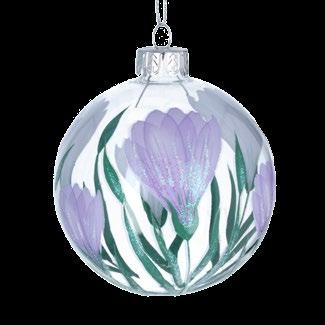
FEATURED BRANDS... If you would like to see your brand or business featured in Pulse, in print or online get in touch: mkpulse@pulsegroupmedia.co.uk
Pure new wool waterproof outdoor cushion - £44.50
heating-and-plumbing.com
Lilac crocus painted glass bauble - £4.99
giselagraham.co.uk
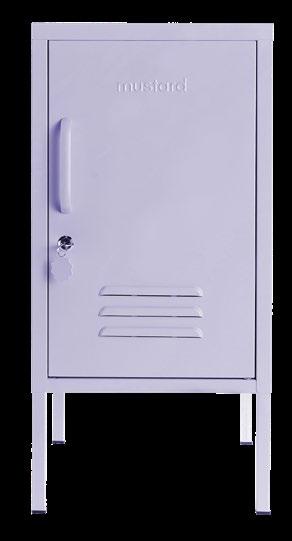
Mustard made lockers (The shorty short locker) - £129
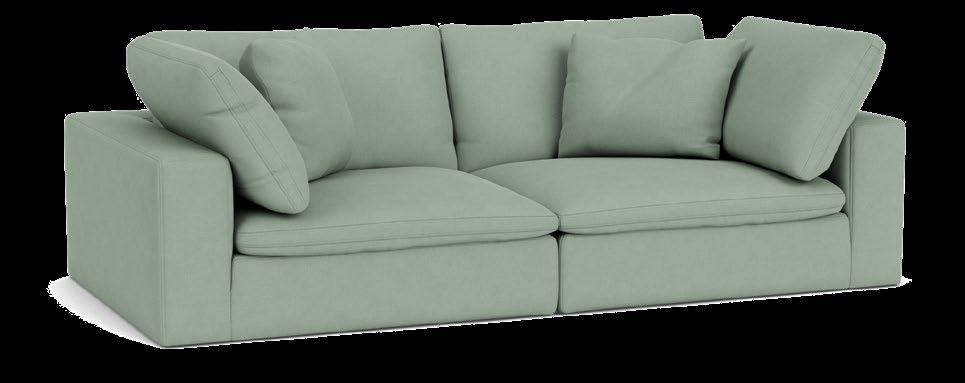
roseandgrey.co.uk
Feather extra deep fabric three seater sofa in brushed cotton mint - £5904
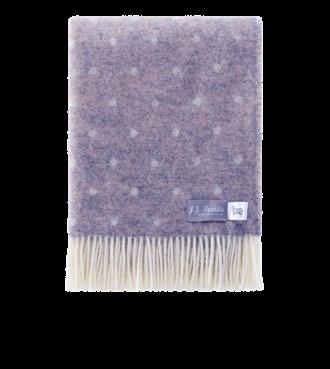
darlingsofchelsea.co.uk Monac conical vase - £33
iamfy.co
Tinkisso colour pop kitchen tap - £139.99
dowsingandreynolds.com
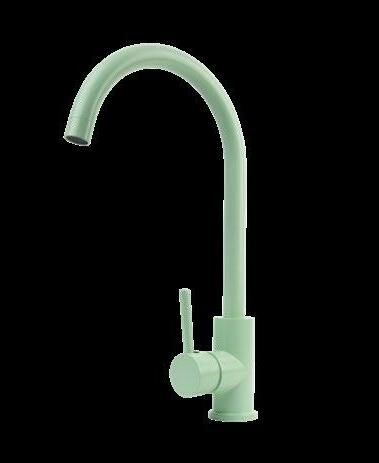
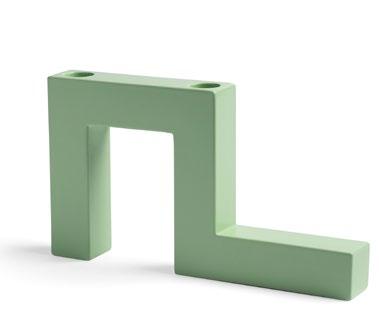
Polka dot wool throw - £104
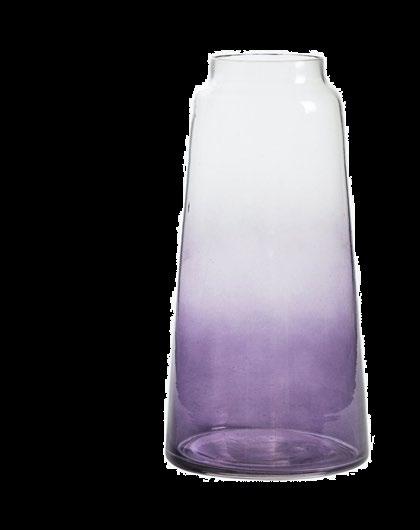
jjtextile.co.uk
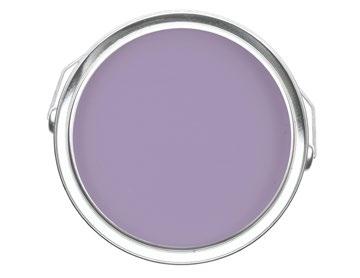
Iris padilla no.94 - £41.95
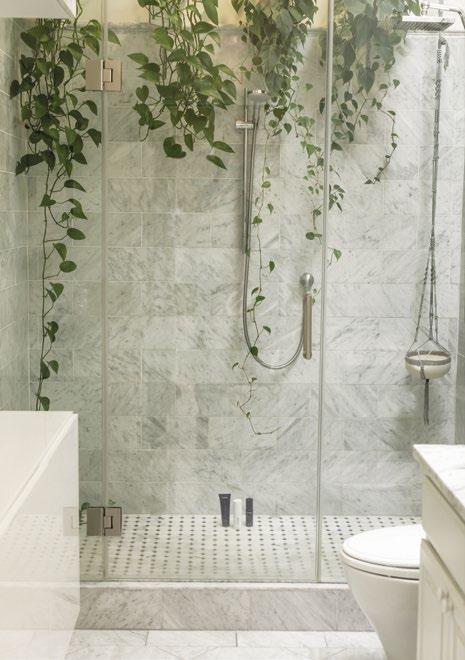
www.mindtheg.com www.dowsingandreynolds.com
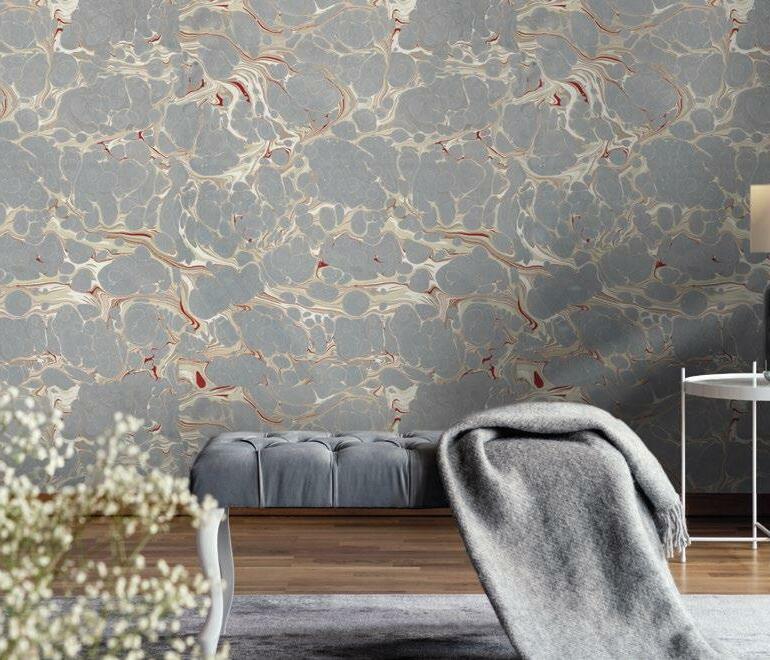
Mesmerising Marble
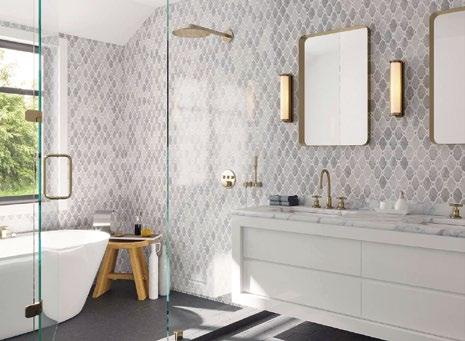
Curology, unsplash
www.tileclub.com
It's safe to say that both influencers and décor enthusiasts are obsessed with marble at the moment and it doesn't look like this trend is going anywhere any time soon. Even though marble has had its fair share of glory days, a preference for overuse in interiors has seen it labelled as flashy and ostentatious in the not-so-distant past. Yet these negative connotations appear to have fallen by the wayside as a new tranche of designers find ever more interesting and exciting ways to use marble to enhance their projects. The key to keeping the look on trend is to use it in smaller areas – accent walls, shower panels, kitchen islands, work surfaces, window seats, fireplace recesses, furniture tops and statement accessories – think less is more and you won’t go far wrong. Marble is predominantly found in China, India, Italy and Spain, with quarries in these locations accounting for around half of the world’s marble. Although marble extraction leaves a significant environmental impact, almost everything extracted is eventually used, even down to the marble powder.
Thanks to new technology and CNC machinery, marble can be cut and fashioned into all sorts of shapes, creating seductively sweeping staircases, smart linear fireplaces and beautifully curved, built-in baths. The only limitation is the size of the slab, so if you’re planning a long plinth or worktop you’ll need to factor in a join.
If your budget doesn’t stretch to a whole slab of marble, then follow Cameron Diaz’s lead and populate your room with smaller pieces such as marble topped furniture and objet d’art. A pair of marble lamps will make a striking focal point on bedside tables or a hall console.
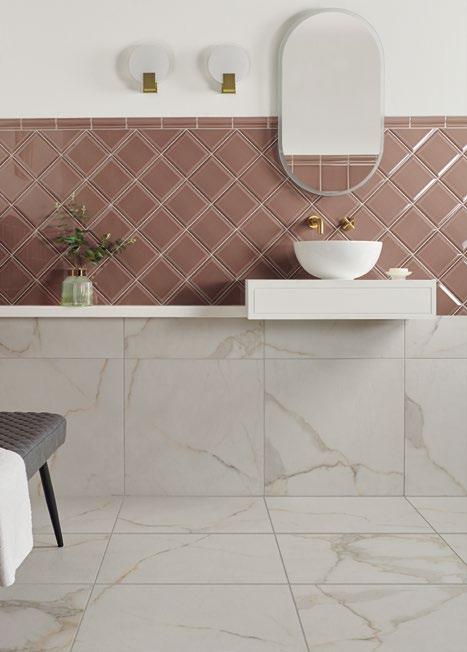
Very often, marble is confused with granite, but whilst marble has veins, granite has a grainy appearance. It’s typically the veins that give the marble it’s character, the amount of veining desired
Rosie Kinsella Interior Designer 01604 751262 www.millsandkinsella.com
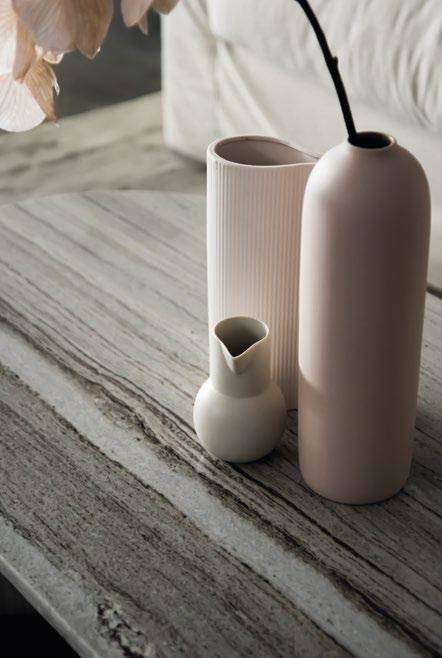
Nathan Oakley, unsplash
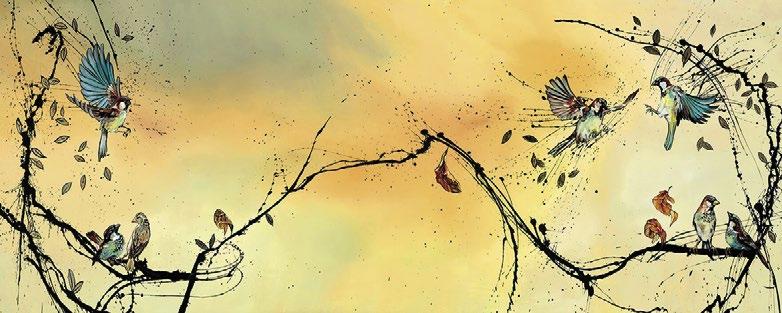
being down to personal preference and the style of the interior. For an unfussy, minimal, contemporary look choose less veining. For a stronger statement piece, opt for more.
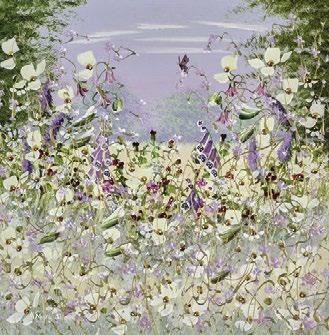
Despite some complications in caring for marble surfaces (they’re porous so likely to absorb liquid and then stain), interior design schemes incorporating this spectacular material look wonderfully striking and are well worth the effort and money. Whilst most designers have always appreciated the timeless elegance of marble, it’s really only in the last few years that its versatility has been realised. Marble can add a touch of class to any room and can suit almost every design aesthetic. Across large surfaces we can marvel at the natural variations in colour, the complexity of the veins and the exquisite beauty of the stone, in smaller pieces we can wonder at the skills needed to fine tune and turn a metamorphic rock into such a refined and elegant accessory. However you choose to use marble, it certainly won’t disappoint. Mary Shaw is a talented and entirely self-taught artist, completing her first commission at the age of just thirteen. After developing a strong affection for the countryside, she became interested in rare and endangered species found amongst England’s hedgerows and they often feature in her work. Mary’s art has a delicate feel and is often embellished with touches of sparkle added to the flowers bringing a sense of light and movement to her paintings.
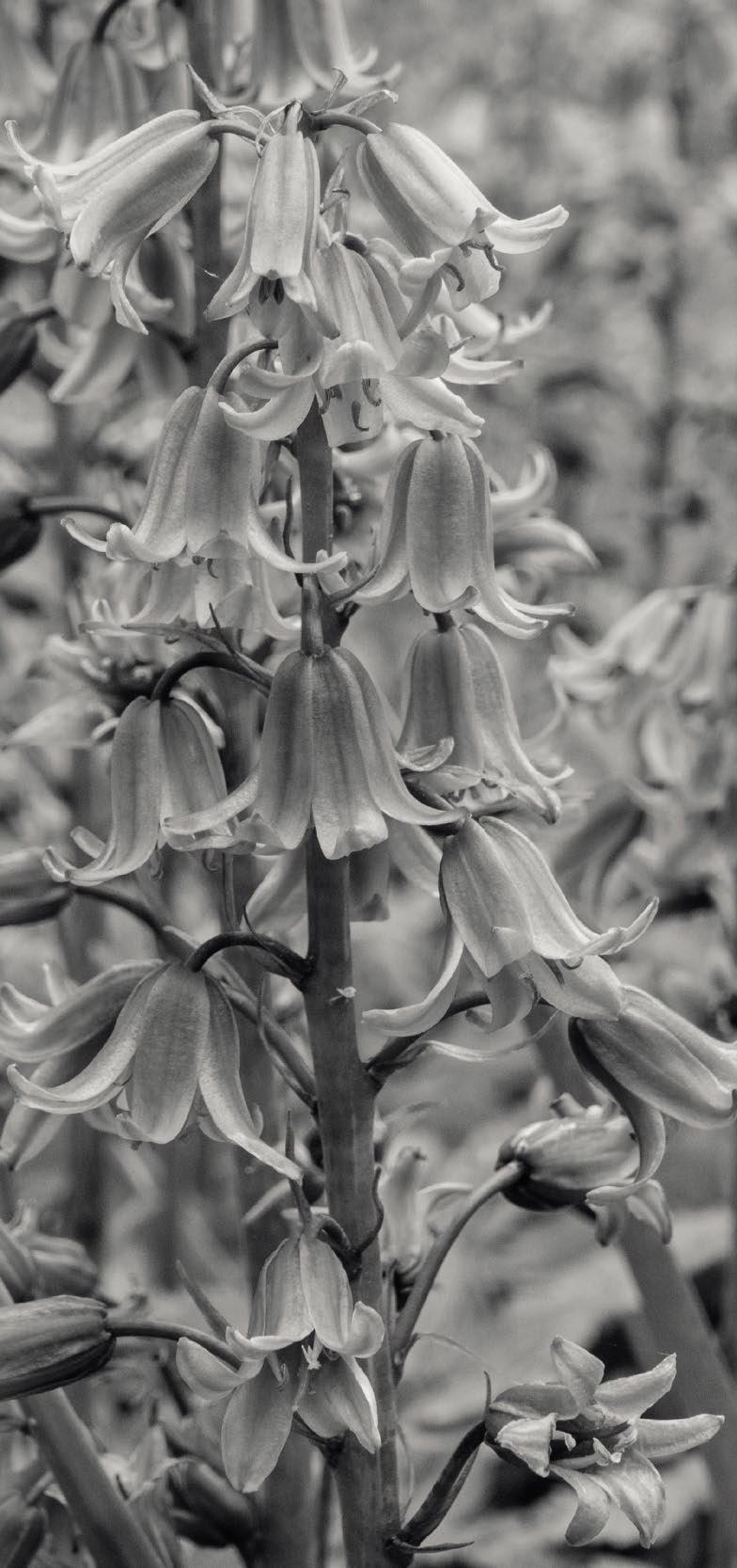
Kay Davenport is a botanical artist who begins by photographing flowers at different stages of their life cycle, from a perfectly formed bud to a windblown bloom that has lost its petals – everything has beauty and tells its own story in her eyes. Kay places her floral subject as the hero of her pieces, set against a strong coloured background.
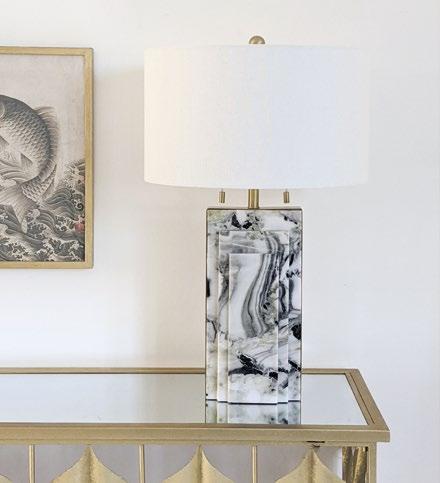
www.frenchbedroomcompany.co.uk
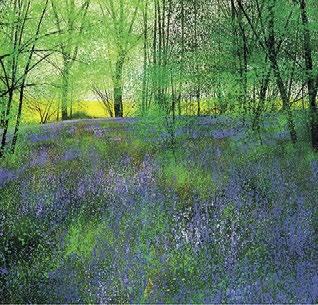
Art in Bloom
“I have nature and art and poetry, and if that is not enough, what is enough?” ~ Vincent van Gogh
For British landscape artists, one of the joys of painting our countryside is documenting our changing seasons. This time of year, watching nature spring back into life after the chill of winter provides new inspiration and motivation to create.
‘Flora’ designates plant life but it was also the Roman goddess of animals, wildlife and fertility and as a female figure, she was the subject of early paintings depicting spring. From the 19th Century, artists such as Van Gogh and Monet focused on flowers and trees and we began to see paintings without any human presence, placing nature at the centre their artwork.
The natural world and our relationship to it provides endless inspiration, even for contemporary artists and here we shine a spotlight on three leading painters in this genre.
Suffolk based Paul Evans focuses on the big skies and gentle landscapes of his local countryside, recording the changing light, weather and seasons from frosted fields to hot summer meadows with stunning results. Paul is particularly renowned for painting bluebell forests, something that is an annual treat for many of us here in Northamptonshire.
Paul Evans Mary Shaw
Gemma Davey Gallery Correspondent www.therosegallery.co.uk










